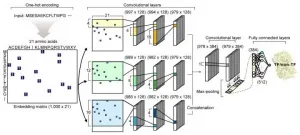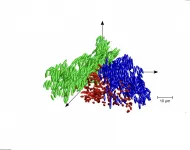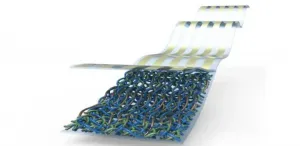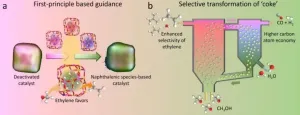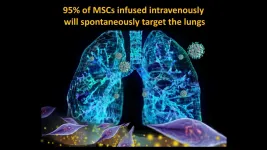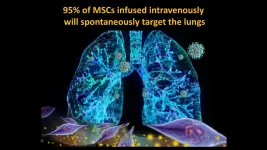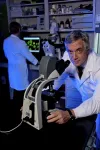Integrator: A guardian of the human transcriptome
2021-01-05
(Press-News.org) In a joint collaboration, Danish and German researchers have characterized a cellular activity that protects our cells from potentially toxic by-products of gene expression. This activity is central for the ability of multicellular organisms to uphold a robust evolutionary 'reservoir' of gene products.
Manufacturing processes need quality control systems in order to ensure proper assembly of functional products. Moreover, space-consuming, and perhaps even toxic, by-products of such processes need to be properly discarded or recycled by efficient waste handling systems.
By analogy, transcription of our genome is an imperfect process that produces large quantities of non-functional and potentially harmful transcripts both from within and outside of conventional genes. The RNA polymerase II enzyme transcribes the majority of our genes, and it also generates pervasive transcripts from multiple non-genic regions. Over the past decade, it has become increasingly clear that the enzyme is relatively promiscuous when it comes to where it starts, and there are transcription initiation sites scattered everywhere in the genome. However, not all these sites are associated with a 'proper' gene, and this requires the presence of specific gene-defining elements.
Discovery of new activity of the protein complex 'Integrator'
In a new article published in the international journal Molecular Cell, a Danish-German research team has now demonstrated that the multi-protein complex 'Integrator' - which was previously described as the transcription termination factor for a specific class of genes encoding small nuclear (sn)RNAs - is in fact a default 'early' termination factor for most, if not all RNA polymerase II initiation events (Figure, top panel).
The resulting short transcripts are in most cases rapidly degraded by the ribonucleolytic RNA exosome. This mechanism is also at play to varying degrees inside conventional genes, but these have evolved elements, counteracting such early termination, to facilitate productive transcription elongation, which eventually produces functional transcripts such as protein-coding 'messenger' (m)RNA (Figure, bottom panel).
Through this newly discovered mechanism of action, Integrator ensures that production of wasteful transcripts remains limited, while at the same time allowing maintenance of thousands of transcription start sites under neutral selection in the human genome. These provide a reservoir of transcription units that may turn into functional genes over time, exemplified by the evolution of the currently known functional RNAs of our genome. As a curious example, snRNA genes appear to be a special case, taking advantage of the general early termination activity of Integrator and fend off the ensuing RNA exosome activity to allow production of stable functional RNAs (Figure, top panel).
Inactivating mutations in Integrator subunits lead to severe neurodevelopmental disorders, and elevated expression of some integrator subunits is associated with increased epithelial-to-mesenchymal transition - a key step in tumor metastasis. This duality highlights the need for a tight control of the Integrator activity. Moreover, the realization that Integrator is a general attenuator of nonproductive transcription may inform the molecular characterization and potential treatment of such ailments.
INFORMATION:
The work was carried out in a collaboration between researchers from Max Planck Institute in Göttingen and Aarhus University.
The scientific article was published in the international journal Molecular Cell:
Søren Lykke-Andersen, Kristina ?umer, Ewa Šmidová Molska, Jérôme O. Rouvière, Guifen Wu, Carina Demel, Björn Schwalb, Manfred Schmid, Patrick Cramer and Torben Heick Jensen
"Integrator is a genome-wide attenuator of nonproductive transcription"
DOI: https://doi.org/10.1016/j.molcel.2020.12.014
For further information, please contact
Søren Lykke-Andersen, PhD - sla@mbg.au.dk - mobile: +45 50510996
Professor Torben Heick Jensen - thj@mbg.au.dk - mobile: +45 60202705
Department of Molecular Biology and Genetics, Aarhus University, Denmark
[Attachments] See images for this press release:
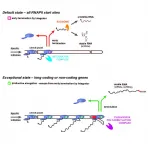
ELSE PRESS RELEASES FROM THIS DATE:
2021-01-05
Researchers at the Francis Crick Institute and the University of Western Australia have developed a new imaging method to see where antibiotics have reached bacteria within tissues. The method could be used to help develop more effective antibiotic treatments, reducing the risk of antibiotic resistance.
During bacterial infections like tuberculosis, bacteria enter human cells, which poses a challenge for treatment, as antibiotics must reach and enter all infected cells in order to be effective. If researchers could select for or develop more effective antibiotics based on where they reach, this may reduce the length of treatment ...
2021-01-05
A joint research team from KAIST and UCSD has developed a deep neural network named DeepTFactor that predicts transcription factors from protein sequences. DeepTFactor will serve as a useful tool for understanding the regulatory systems of organisms, accelerating the use of deep learning for solving biological problems.
A transcription factor is a protein that specifically binds to DNA sequences to control the transcription initiation. Analyzing transcriptional regulation enables the understanding of how organisms control gene expression in response to genetic or environmental changes. In this regard, finding the transcription factor of an organism is the first step in the analysis ...
2021-01-05
While glass is a truly ubiquitous material that we use on a daily basis, it also represents a major scientific conundrum. Contrary to what one might expect, the true nature of glass remains something of a mystery, with scientific inquiry into its chemical and physical properties still underway. In chemistry and physics, the term glass itself is a mutable concept: It includes the substance we know as window glass, but it may also refer to a range of other materials with properties that can be explained by reference to glass-like behaviour, including, for instance, ...
2021-01-05
Sunlight offers a potential solution in the search for an energy source that does not harm the planet, but this depends on finding a way to efficiently turn electromagnetic energy into electricity. Researchers from KAUST have shown how a known herbicide can improve this conversion in organic devices.
While solar cells have traditionally been made from inorganic materials such as silicon, organic materials are starting to break through as an alternative because they are light, flexible and relatively inexpensive to make, even offering the possibility for ...
2021-01-05
MTO process, which was first commercialized in 2010, is a catalytic process converting methanol, which is typically made from coal, natural gas, biomass, and CO2, over SAPO-34 zeolite catalyst. It's becoming one of the main streams for producing light olefins, including ethylene and propylene, from non-oil resources.
One of the major challenges in MTO is the rapid deactivation of zeolite catalyst due to the coke deposition.
In industrial practices, a fluidized bed reactor-regenerator configuration is normally used in order to maintain the continuous operation, in ...
2021-01-05
Dr. Camilo Ricordi, director of the Diabetes Research Institute (DRI) and Cell Transplant Center at the University of Miami Miller School of Medicine, and his team of international collaborators are reporting the results of a groundbreaking randomized controlled trial showing umbilical cord-derived mesenchymal stem cell (UC-MSC) infusions safely reduce risk of death and quicken time to recovery for the most severe COVID-19 patients. Dr. Ricordi's peer-reviewed paper has just been published in STEM CELLS Translational Medicine (SCTM) January 2021.
The clinical trial, authorized by the FDA last ...
2021-01-05
Dr. Camilo Ricordi, director of the Diabetes Research Institute (DRI) and Cell Transplant Center at the University of Miami Miller School of Medicine, and his team of international collaborators are reporting the results of a groundbreaking randomized controlled trial showing umbilical cord-derived mesenchymal stem cell (UC-MSC) infusions safely reduce risk of death and quicken time to recovery for the most severe COVID-19 patients. Dr. Ricordi's peer-reviewed paper has just been published in STEM CELLS Translational Medicine (SCTM) January 2021.
The clinical trial, authorized by the FDA last April, was initiated by The Cure Alliance, a 501(c)(3) non-profit organization of research scientists founded ten years ago by Dr. Ricordi for scientists ...
2021-01-05
Like any other plant, Arabidopsis thaliana or mouse-ear cress, needs nitrogen to survive and thrive. But, like maize, beans and sugar beet, it prefers nitrogen in the form of nitrate, growing better on nitrate rich soil. Whereas, pine and rice for example preferentially grow on ammonium nutrition, another form of the key macronutrient nitrogen. If the concentration or the availability of the different forms of nitrogen fluctuate, plants have to adapt quickly. "One of the most important questions is, what is the role of plant hormones in adaptation to the nitrogen availability? How do the machineries within a plant cope with their changing environment?" asks Eva Benková, developmental biologist and Professor at the Institute of Science and Technology (IST) Austria.
Finding the balance
In ...
2021-01-05
University of Miami Miller School of Medicine researchers led a unique and groundbreaking randomized controlled trial showing umbilical cord derived mesenchymal stem cell infusions safely reduce risk of death and quicken time to recovery for the severest COVID-19 patients, according to results published in STEM CELLS Translational Medicine in January 2021.
The study's senior author, Camillo Ricordi, M.D., director of the Diabetes Research Institute (DRI) and Cell Transplant Center at the University of Miami Miller School of Medicine, said treating COVID-19 with mesenchymal stem cells makes sense.
Results: treatment group vs. ...
2021-01-05
Inspired by the color-changing skin of cuttlefish, octopuses and squids, Rutgers engineers have created a 3D-printed smart gel that changes shape when exposed to light, becomes "artificial muscle" and may lead to new military camouflage, soft robotics and flexible displays.
The engineers also developed a 3D-printed stretchy material that can reveal colors when light changes, according to their study in the journal ACS Applied Materials & Interfaces.
Their invention is modeled after the amazing ability of cephalopods such as cuttlefish, octopuses and squids to change the color and texture of their soft skin for camouflage and communication. This is achieved by the ...
LAST 30 PRESS RELEASES:
[Press-News.org] Integrator: A guardian of the human transcriptome

